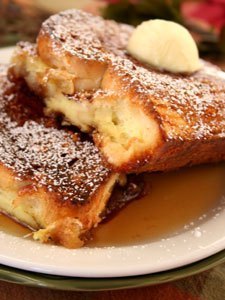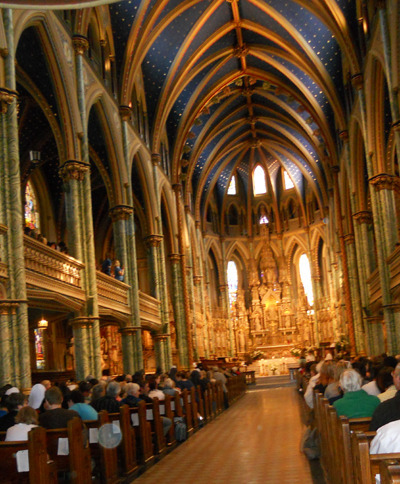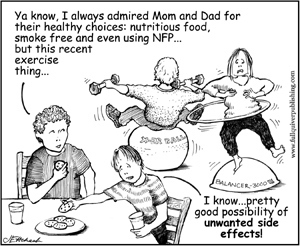Ellen Gable's Blog, page 95
December 4, 2012
The First Church Bells by Catherine Doherty
 This beautiful article is entitled “The First Church Bells” from the book “Donkey Bells” by Catherine Doherty (my all-time favorite Advent book) which is available from Madonna House. Enjoy this beautiful story from Catherine:
This beautiful article is entitled “The First Church Bells” from the book “Donkey Bells” by Catherine Doherty (my all-time favorite Advent book) which is available from Madonna House. Enjoy this beautiful story from Catherine:
It came to me, during these days of Advent, that I should share with you a custom which is not necessarily liturgical but which adds to the enjoyment of this lovely season. It has deep spiritual connotations; at least it did for our family, and for many others I knew when I was a young child.
When I was a little girl, my mother used to tell me that if I was good during this holy season of Advent, and offered my little acts of charity and obedience throughout Advent to the little Christ Child for a gift on his birthday, then sometime during Advent, at first very faintly and then quite clearly, I would hear bells. As she put it, the first church bells.
These were the bells around the neck of the little donkey that carried Our Lady. For mother explained that Our Lady carried Our Lord. She was the temple of the Holy Spirit, the first ‘church’ as it were, since Christ reposed in her. And the donkey, carrying Our Lady and sounding his bells as he walked, wore the first church bells.
Around the second week of Advent, mother wore a little bracelet that had tinkling bells. As she moved her hand I could hear them tinkle, and I got excited because I associated them with the donkey’s bells.
As young as I was, my imagination would build up a lot of little stories about the trip of Our Lady from Nazareth to Bethlehem — stories which I would share with my mother, and which would spur me on to further good deeds and little sacrifices.
During the third week of Advent, mother’s bracelet miraculously got many more bells on it. Their sound grew louder and louder as Christmas approached. It was wonderful.
My brother and I used to listen. Mother’s bells were first around her wrist and then around her knee too. Then more bells, as it got closer to Christmas. We were really excited about them.
I introduced this little custom in Madonna House. During Advent, I wear a kind of bracelet that can be heard as I walk or move, in whatever room of the house I may be. The members of our family tell me that it spurs them on, even as it did me when I was a child, to meditate more profoundly on the mystery of Advent.
Here at Madonna House, we have begun in these last few years to make a collection of miniature donkeys — of wood, glass, ceramics, rope — you name it. And we have an album of Christmas cards (which we save from the many we receive) that depict the donkey in the manger scene.
The presence of the donkey and the ox in Scripture is symbolic of the prophets who foretold the Incarnation. And also of the fact that “the ox and ass know their Master’s voice, but Israel doesn’t know the voice of God” (Isaiah 1:3). So, you see, there is some spiritual foundation for my love for the donkey which brings such great joy to my heart.
I’m sure that, as a child, Christ rode on a donkey many times. And also as a man, of course. In Scripture we know of only two times: one was when the donkey carried Our Lady, who in turn carried God, from Nazareth to Bethlehem. The other was when the donkey carried Christ into Jerusalem as the people laid palm branches before Him, proclaiming him king.
Let us think for a moment: What kind of animal is a donkey? It is a beast of burden, the animal of the poor. Once again, the immense theme of poverty is illustrated in an animal. God chose the humblest, the smallest in status, because among the animals the donkey is considered very low. So God is teaching us a lesson here — a lesson of humility, of poverty, and of simplicity.
Have you ever seen a newborn donkey? Well, every donkey has a black cross on its gray fur, a marking which is especially noticeable just after it is born from its mother’s womb. It gets less clear as the donkey matures, but still is visible. I share this fact with you to teach you to open your heart to the bells of the donkey that carried Our Lady and also God.
The breath of the donkey and the ox made the stable warm. So we meditate on several things at once: the poverty and humility of the donkey God chose, and which should be our poverty and humility; and the breath of our love, which should warm God in our neighbor constantly.
Let us remember that the donkey also had no room at the inn. Neither woman, nor man, nor donkey had a place at the inn. So they went to live in a poor stable that wasn’t too well prepared for animals, let alone as a decent habitation for human beings.
Now, another meditation comes to us. Think of the millions of people who are left homeless on our streets. Tragic is this situation. We, as apostles, must be very careful that we do not exclude anyone from the inn of our heart.
I pray that our heart, our soul, our ears will hear very clearly ‘the bells of the donkey,’ not only in Advent but throughout the year. For whoever who is pure of heart and childlike shall hear the bells of the donkey ring in their life.
This article is free to use under the Creative Commons Licenses


December 1, 2012
Sunday Snippets – December 2
Image copyright Ellen Gable Hrkach
Please join me and other Catholic writers as we share posts from the previous week at RAnn’s Place.Bread Upon the Water Book Review
Come My Beloved Photo Endorsement


November 30, 2012
7 Quick Takes Friday – November 30
 Please join me and other Catholic bloggers at Conversion Diary for 7 Quick Takes Friday.
Please join me and other Catholic bloggers at Conversion Diary for 7 Quick Takes Friday.
Image copyright Full Quiver Publishing
2. Snow, Snow, Snow!
We woke up to this winter wonderland a few mornings ago!
3. Loreena McKennitt Concert
Tomorrow, my husband and I are looking forward to seeing Loreena McKennitt in concert at the National Art Centre in Ottawa. Here’s a beautiful video of her performing “Snow.”
4. Favorite Advent Books
It’s that time again! Here are some of my favorite Advent Books:
Donkey Bells – Catherine Doherty (Madonna House)
Welcome Baby Jesus - Sarah Reinhard
Joy to the World: Advent Activities For Your Family - Kathleen Basi
Advent, Christmas and Epiphany in the Domestic Church – Peter and Catherine Fournier
O Radiant Dawn – Lisa Hendey (Just released this year!)
Advent and Christmas with Fulton Sheen
5. Make Your Own Advent Wreath
Years ago, my husband made our advent wreath and we have been using the same one every year (we replace the candles). Our wreath uses the shorter votive type candles. To learn how to make your own advent wreath, click here: http://www.catholicculture.org/culture/liturgicalyear/activities/view.cfm?id=954
6. Stuffed French Toast
A favorite of ours every Christmas morning is this easy-to-make, easy-to-serve breakfast. I usually prepare it the day before, then pop it in the oven just before the kids wake up to open presents Christmas morning. There are many different variations, but here’s the one I use because it serves our large family.
7. New Blog Photo
Regular readers may notice that my “water” blog photo above has been changed. This photo from Venice was taken five years ago when we traveled in Italy.
Copyright 2012 Ellen Gable Hrkach


November 28, 2012
Come My Beloved Photo Endorsement
 Special thanks to Leticia Velasquez, author of the wonderful book, “A Special Mother is Born,” for this photo endorsement of my book, “Come My Beloved: Inspiring Stories of Catholic Courtship!”
Special thanks to Leticia Velasquez, author of the wonderful book, “A Special Mother is Born,” for this photo endorsement of my book, “Come My Beloved: Inspiring Stories of Catholic Courtship!”


November 27, 2012
Bread Upon the Water Book Review
 Here in North America, many Catholics have become indifferent. A large number don’t attend Mass on Sunday. Contrast that to the Catholics in developing countries who often walk miles to attend Mass.
Here in North America, many Catholics have become indifferent. A large number don’t attend Mass on Sunday. Contrast that to the Catholics in developing countries who often walk miles to attend Mass.
Bread Upon the Water by Deanna Klingel is the true story of the difficult and painful journey of Duong Tien, born in South Vietnam, who from an early age knew he had a vocation to the priesthood. When communism invaded his country, he left his family, became a boat person and refugee in a frightening journey to freedom.
This man’s determination is inspiring. Through all the hardships, sicknesses and dangerous situations, he continued to persevere and trust that God would allow him to someday become a priest in America. In fact, the author shows that this man would have welcomed death to the alternative of living in a communist country with no religious freedom.
Although the target audience is young adult, I highly recommend this book to everyone, young and old. Reading Duong Tien’s story could certainly help us all appreciate the gift of our Catholic faith.
To purchase the book on Amazon, click on this link:
http://www.amazon.com/Bread-Upon-Water-Deanna-Klingel/dp/0977962857
To find out more about this book or read an excerpt, click this link:
http://www.booksbydeanna.com/bread-upon-the-water.html
Copyright 2012 Ellen Gable Hrkach


November 21, 2012
Side Effects Cartoon
November 19, 2012
NFP and Communication
 My latest post at Catholic Mom is entitled Natural Family Planning and Communication.
My latest post at Catholic Mom is entitled Natural Family Planning and Communication.
Lack of communication is one of the leading causes of marital breakdown. For the NFP-using couple, communication is essential. Procrastination isn’t an option. The NFP couple discusses whether or not they will be avoiding or planning pregnancy. In order to be successful at this, it’s necessary to discuss the woman’s signs of fertility and infertility. My husband has often said, “If you can talk about your wife’s cervical mucus, you can discuss anything.”
To briefly review how NFP works: husband and wife chart the wife’s signs of fertility and infertility. (Note: the man is fertile every day of his post-pubescent life, assuming there are no health difficulties). The couple then determines the start and end of the fertile time (we call it Phase II). If they are avoiding pregnancy, they abstain in the fertile time. If they are planning a pregnancy, they engage in relations during this time. Although it sounds simplistic, there are various scenarios, conditions and more complicated issues that arise, so formal NFP classes (either live or online) are recommended.
One of the keys to each couple’s success in using NFP is effective communication. NFP works best when the couple, together, study and observe the woman’s signs of fertility and infertility. Ideally, each month, the NFP couple discusses whether they will be avoiding a pregnancy or achieving a pregnancy. Because NFP can be used both to plan and to avoid, it’s a good idea to have this conversation every month, even if the couple has decided that they will be avoiding pregnancy for a year or more. When internal shifts in emotional attitude are brought to the surface, the couple can unite in their efforts to carry out their plans regarding abstinence.
In over 30 years of using NFP, we have found that frequently one of us was more open to pregnancy and the other still wanted to avoid it for the time being. Sometimes our monthly conversations were long and complicated; other times, short. The important point is that these types of dialogues are meant to take place well beforehand and not in the middle of the marital embrace.
When the NFP couple is discussing intimate topics such as mucus and other fertility signs, it enhances their marital and sexual life, thereby increasing intimacy. This sort of communication should also continue when the couple is postpartum (after having a baby) and in post-menopause (after menopause).
When they are avoiding pregnancy, abstinence can be difficult and challenging. Being able to talk to your spouse and know that you are not alone in the struggles and challenges brings a couple together in love. NFP demands the kind of intimate and deep conversation that a married couple needs to enhance their marriage. Perhaps this is one of the reasons that NFP couples have a lower divorce rate.
For more information on NFP:
www.ccli.org
http://www.thebillingsovulationmethod.org/
www.creightonmodel.com
www.serena.ca
Copyright 2012 Ellen Gable Hrkach


November 17, 2012
Sunday Snippets – November 18
Image copyright Ellen Gable Hrkach
Please join me and other Catholic bloggers at RAnn’s Place for Sunday Snippets where we share posts from the previous week.Does Self-Publishing Mean Substandard? (Latest post for CWG Blog)
Frozen Footprints by Therese Heckenkamp Book Review
7 Quick Takes Friday I’ll be traveling down to NJ for Thanksgiving, a high school reunion and to speak to a group of Catholic high school students in Philadelphia.


November 16, 2012
7 Quick Takes Friday – November 16
 Please join me and other Catholic bloggers at Conversion Diary for 7 Quick Takes Friday.
Please join me and other Catholic bloggers at Conversion Diary for 7 Quick Takes Friday.
On Sunday, I’ll be traveling down to New Jersey to visit with my extended family and to take part in other various activities.
1. Hallahan High School
This Tuesday, I’ll be visiting my mother’s alma mater, Hallahan High School (My mom graduated with the Class of ’51) in Philadelphia to speak to some of the Freshmen Theology Classes. 
2. Reunion
Speaking of high schools, I’ll also be attending my 35-year high school reunion next week. I’m looking forward to seeing my fellow Class of ’77 classmates. It’s no surprise that I was one of the shortest in our class. The photo below was for the “Who’s Who’s” in the yearbook (that’s me on the left).
3. Frozen Footprints
Therese Heckenkamp’s exciting new novel, Frozen Footprints, has been released! Read my review here.
(I’m skipping #4 since I posted eight last week!)
5 and 6. We Sure Have Changed!
We recently had a formal family photograph taken for our parish directory. The last time we did this was 15 years ago before we had our youngest son (top). 

image copyright Full Quiver Publishing
Copyright Ellen Gable Hrkach


November 15, 2012
Frozen Footprints by Therese Heckenkamp
 Eighteen-year-old twins Charlene and Max Perigard have grown up under their wealthy but often cruel grandfather. When Max disappears and a ransom note is received, Charlene tries to persuade her grandfather to pay the ransom, but the older man thinks this is another attempt by his grandson to get money from him. Without her grandfather’s help, Charlene tries to find her brother before it’s too late.
Eighteen-year-old twins Charlene and Max Perigard have grown up under their wealthy but often cruel grandfather. When Max disappears and a ransom note is received, Charlene tries to persuade her grandfather to pay the ransom, but the older man thinks this is another attempt by his grandson to get money from him. Without her grandfather’s help, Charlene tries to find her brother before it’s too late.
Therese Heckenkamp’s second novel is an exciting page turner with non-stop action. It’s a very different experience than the author’s first book, Past Suspicion (Christian Romantic Suspense). Frozen Footprints has all the elements of an edgy thriller with Catholic references interspersed throughout the novel.
The protagonists are well-developed with flaws and strengths. The antagonists are frightening and believable. As a former court reporter, I enjoyed the courtroom chapters.
For me, as a reader, the measure of a good novel is to be there with the characters as they move forward in the story. Therese Heckenkamp’s talent as a storyteller is the ability to create a plot, characters and setting that are realistic and at the same time entertaining. Her writing style is crisp and varied and she keeps the reader on the edge of his/her seat.
Caution to parents: Some parts of this book are graphically violent. However, it is well worth the read and I highly recommend it for older teens and adults.
Frozen Footprints is available on Kindle and in print on Amazon.
Copyright 2012 Ellen Gable Hrkach










